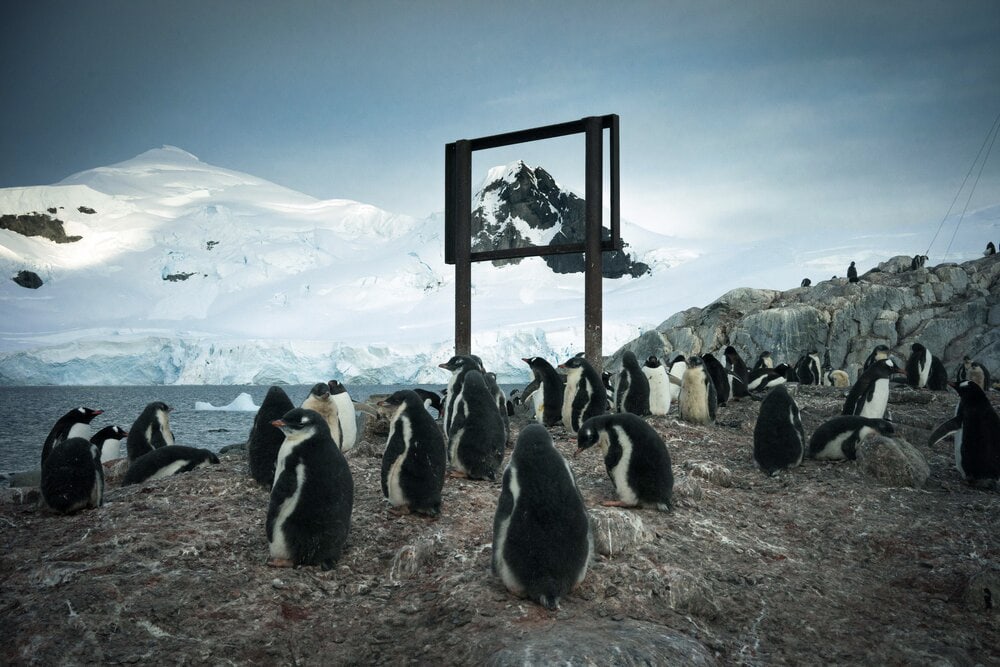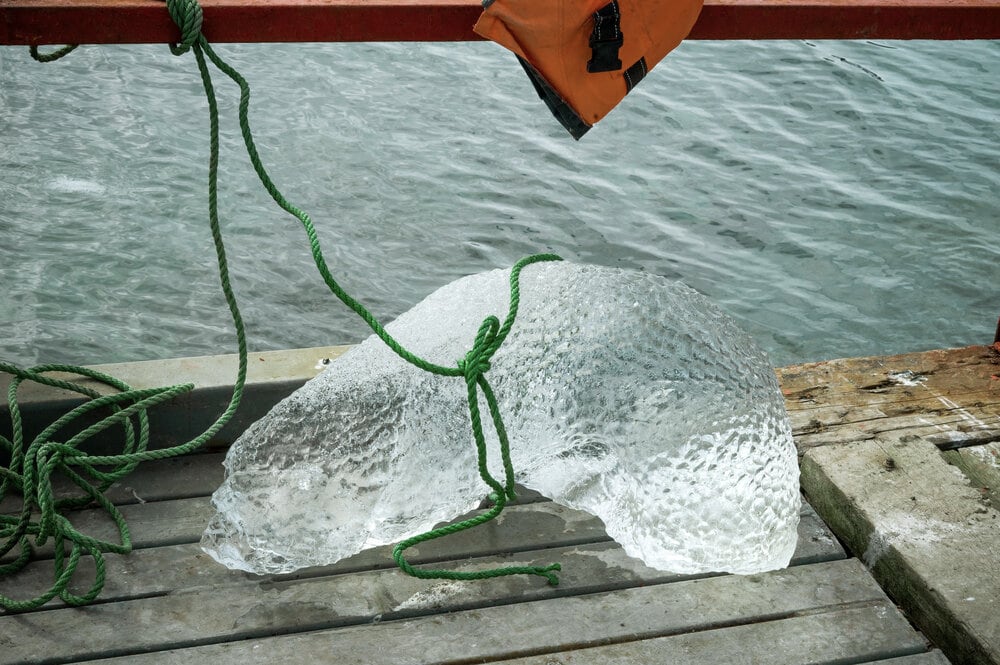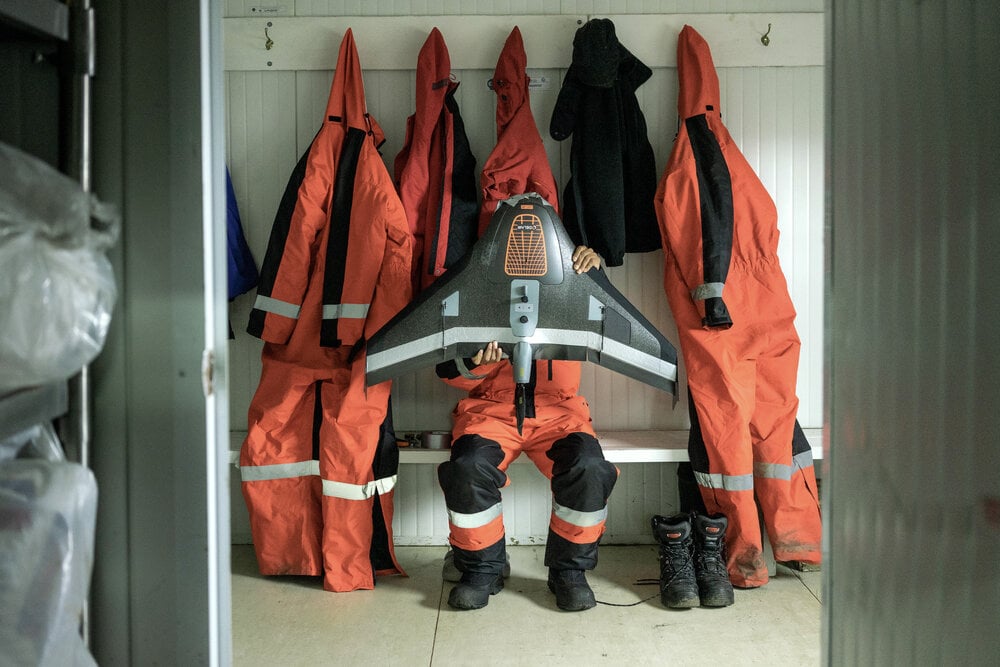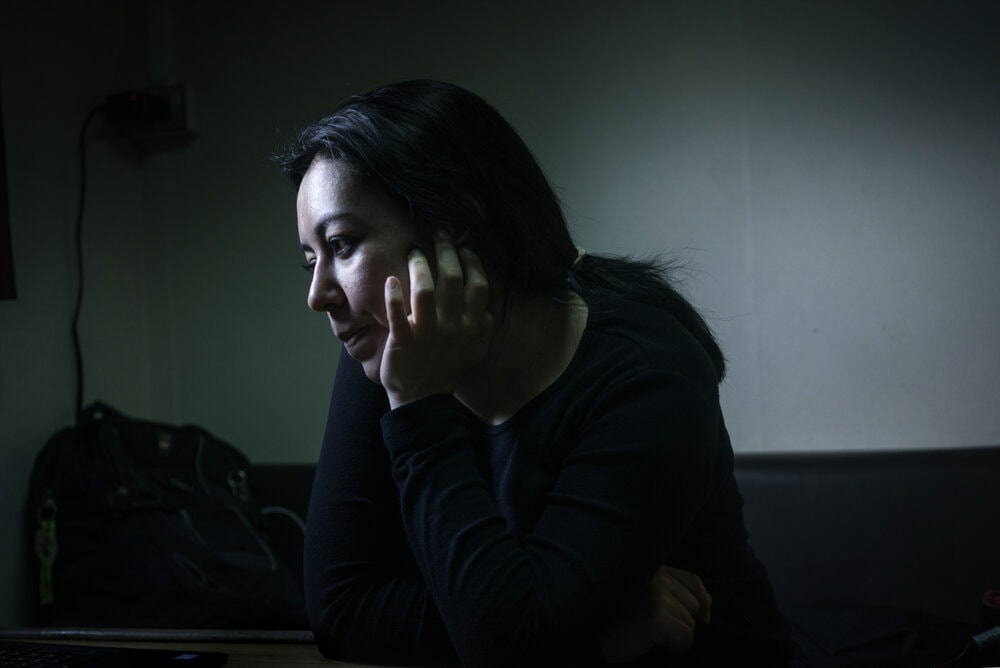
Sixty days trapped in the ice
Estacionarios (Extremophiles) was the project that Ecuadorian photographer Isadora Romero carried out in early 2019 in Antarctica after an unexpected invitation from the Ecuadorian Antarctic Institute. For two months, she lived in extreme situations in a hostile environment, with shallow temperatures and the constant feeling that the environment was unsuitable for humans. The trip and everything she experienced during it made her wonder about the relationship between human beings and the natural environment surrounding them.
By Marcela Vallejo
One day in January 2019, Ecuadorian photographer Isadora Romero was on a film set in Riobamba, in the middle of the Ecuadorian Andes, more than 200 km from Quito. She took a break and checked her cell phone; she had several missed calls from an unknown number. She assumed it was from the bank offering her some credit, so she ignored the calls. Shortly after, she received a message that read, “Hello, this is Commander Coral from the Ecuadorian Antarctic Institute, and I have been trying to reach you.” Isadora, of course, was shocked. She didn’t know there was an Ecuadorian Antarctic Institute, she didn’t understand why they were looking for her, and she began to doubt that all this was true.
She called the number she had, and Commander Coral told her that they had seen her profile on the internet and that he wanted to propose to her to be part of the XXIII expedition that would leave in a month. The trip would be made with the military and scientists. The idea was that Isadora could develop a photographic project in Ecuador’s base in Antarctica and then deliver part of the photographs taken. She had to present a project the following week, take some tests and arrive in Chile a few days before starting the expedition.
He warned her that the environmental conditions were very hostile and that she would have no internet connection. He informed her that she would be in one of the most dangerous seas in the world and that she would have to sleep tied to a bed. Finally, he asked her how she was doing in conditions of confinement because she would have to be isolated for two months, sharing space with very different people. Isadora did not understand anything, Commander Coral wanted an answer immediately, and she did not know what to say. She asked for some time to think; the commander gave her 10 minutes.
The artist called her mother, she expected her mother to dissuade her, but the opposite happened. Her mother told her enthusiastically: “You have to go. It’s as if you were invited on a trip to the moon.”
“The whole thing was too funny to me, and I wondered why life had put me in this situation,” says the photographer. “I started to do a lot of research on Antarctica, and I began to understand that it was very crazy that there is this utopian place in which some countries have agreed that it is a place for the good of humanity, a place for science, a place that has no borders and in which exploitation is prohibited, no, if you were saying how was it possible that we achieve these agreements as humanity and the rest of the world is shit, right?”
So, she decided that if she traveled with scientists, she would do her scientific observation, but not of animals or environmental conditions. “Since all these scientists were going to observe their rocks, their little animals, the soil, I decided that I wanted to watch what was going on with humans in Antarctica, why we were there, what we were doing there, what was the relationship between humans and Antarctica, why we were there, what we were doing there, what was the relationship between humans and Antarctica, and what was the relationship between humans and Antarctica, why we were there, what we were doing there, what was the relationship with the environment.” And so the Estacionarios (Extremophiles) project was born.

Expedition XXIII turned out to be an exciting trip. First, because it had a playful touch: Isadora dedicated herself to making her collections of elements. She collected details such as the oceanographer’s hair, the artist’s tears, and plastic waste in little bottles that she later exhibited. She wanted to play with the idea of scientific nomenclature and created her own.
At the same time, she understood how scientific processes work. “I understood that every scientist was as crazy as any artist as they can explain the world to you through a pebble or water or something.” And at the same time, she understood the military world. She discovered that military discipline was, in a sense, “necessary” to build and survive in a space like the Institute’s base in Antarctica.
Isadora felt like she was watching baby penguins in one of those nature programs. Then an animal would come out of nowhere and kill them, and blood would be everywhere. On the other hand, she saw the most beautiful scenery she could imagine. It was like always being on edge, leading her to ask herself some questions. “I feel like it put me also in a situation of being on par with the other species. It’s a place where you see that the other species live in a way, and that leads you to understand what your role of yours is in that space.”

One of those questions concerned the human need to appropriate places and to make their presence explicit. With noises, symbols, with institutions. “I realized that this utopia, this place that belongs to no one, is constantly haunted by all the exploitative interests of countries that are in processes of territorial reclamation.”
So, then, the photographer managed to answer one of the first questions she asked herself when she was invited to Antarctica, what is Ecuador doing there? In Antarctica, there are natural resources that have yet to be exploited; many of them are assumed that, at some point, they will end up in the continental territories.
Currently, seven countries are making territorial claims over Antarctica: Chile, Argentina, New Zealand, Australia, France, England, and Norway. Together they have made a treaty in which they recognize the independence of the place, and therefore there are no borders, nor is exploitation allowed. The treaty will end in 2048. In the meantime, although there are no borders, the military and scientific bases of each country are like small national satellites: to enter each one, you must have special permits and present your passport, and each one has its flag and its soccer team.

The experience also allowed him to examine science and art critically. “In Antarctica, it is very evident how all these state mechanisms work, whose cover is science and the good of humanity, but behind it are all these exploitative interests. For example, a lot of research is done to see what would be the most sustainable way to fish, the most sustainable way to do tourism…”
Science has played a fundamental role in the constitution of nation-states. As Isadora says, it’s not only about philanthropic purposes. It’s not so innocent. And art is the same. “For me, this trip was one of surrendering and saying: there is no innocence in this species; there is not. I still can’t figure out this interest in domination, appropriation, and cataloging. I had to accept that I am part of this too; obviously, I didn’t want to do my work with innocence, and that’s why the project is also full of irony.”
Many current discourses place the human species as the culprit of the worrying situation of the planet. Many of them are correct; the responsibility is enormous. But, the solution does not lie in imagining the world without humans. “That romantic thing doesn’t seem to be the answer, but to put the real interests, the real actors, on the table. The discussion about climate protection is still very superficial, and from art, of course, I feel that we can break that up a bit and generate other kinds of conversations.”
Two months of expedition, of extreme situations, of being in danger and feeling how the environment affected her body directly, led Isadora to a series of reflections that now run through her work and have borne fruit in projects like La sangre es una semilla, one of last year’s World Press Photo winners.
“I felt it was like going to the beginning of the world, like seeing how our species began to gain ground. From there, my other projects always have that in mind. It’s not an inquisitorial thing against human beings, but accepting what we are and taking charge of it. So how do we go about not being so horrible? What other forms of bonding can we have with each other? Having been in that space also trying to survive a lot of physical, social, and internal things, it planted some solid foundations and seeds for what I continued to do and what I continue to be interested in.”


